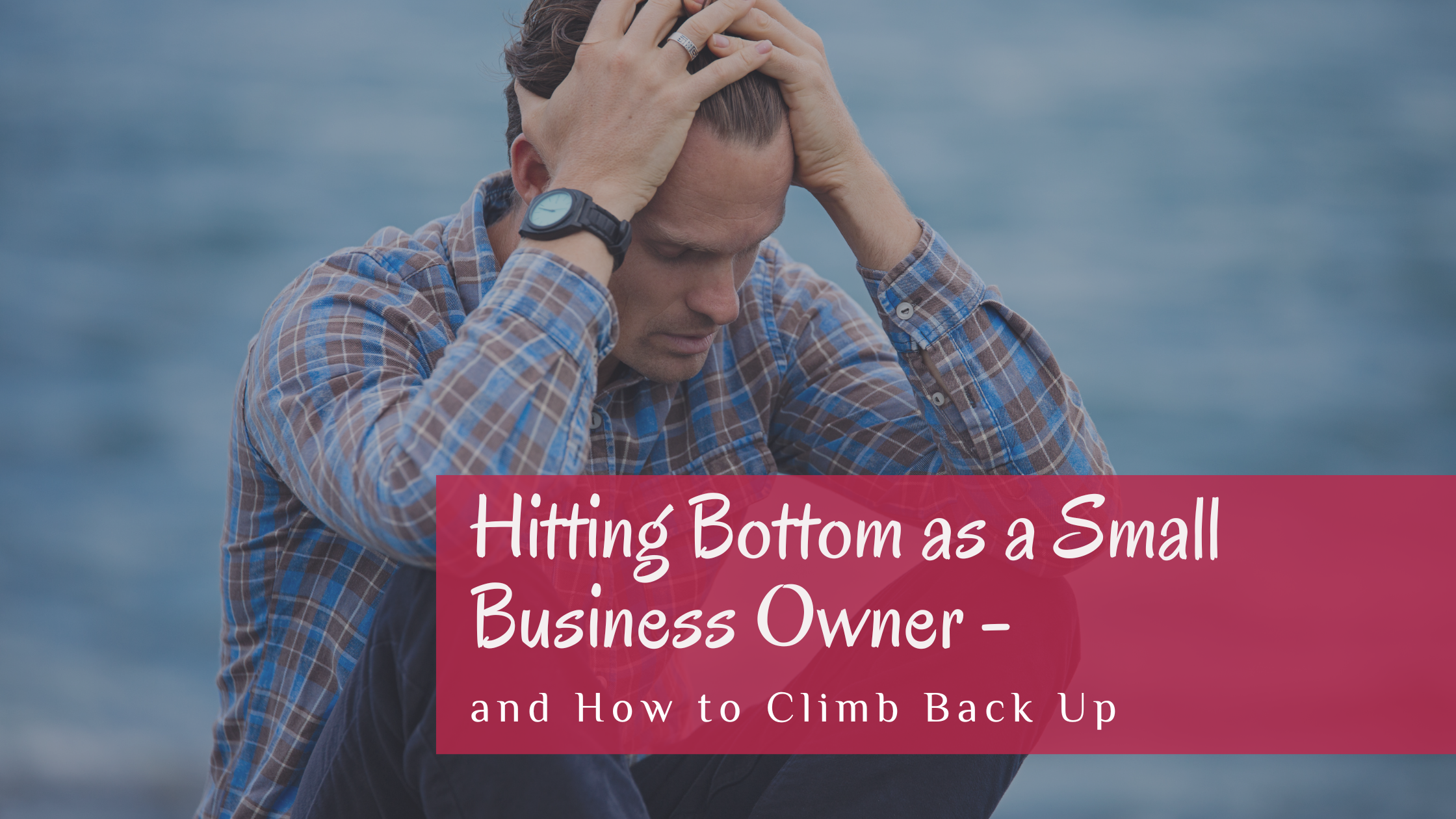Running a small business is tough. You pour your heart, time, and money into it, only to hit roadblocks that threaten everything you’ve built. Maybe sales dried up, debt piled up, or a major setback pushed you to the edge. Maybe you even had to shut down. Hitting bottom as a business owner feels devastating. But it doesn’t have to be the end of your story. Many of the most successful entrepreneurs have been where you are and found a way to rebuild. Here’s how you can do the same.
Step 1: Acknowledge the Reality Without Letting It Define You
It’s easy to get stuck in denial, but the first step toward recovery is recognizing what went wrong. This isn’t about wallowing in failure—it’s about diagnosing the problem so you can fix it. Take an honest look at your business. Ask yourself:
- Did I run into cash flow problems?
- Was my product or service not in demand?
- Did I struggle with marketing or sales?
- Were my expenses too high?
- Did I face an external crisis (economy, pandemic, supply chain issues)?
Writing down the key issues helps remove emotion from the equation. It’s not about blaming yourself—it’s about seeing the facts clearly so you can make better decisions moving forward.
Step 2: Accept That Failure Is Part of the Process
Almost every successful entrepreneur has faced failure. Steve Jobs was fired from Apple, a business he helped create. Walt Disney went bankrupt before he built his empire. The difference between those who succeed and those who don’t isn’t avoiding failure—it’s learning from it.
Instead of seeing failure as proof that you’re not cut out for business, see it as tuition for your education. You’ve learned valuable lessons that will make you a smarter, stronger entrepreneur.
Step 3: Rebuild Your Confidence and Mindset
After hitting bottom, self-doubt can creep in. You might feel like giving up. But your mindset will determine whether you stay down or get back up. Start by shifting your perspective:
- Reframe failure – Instead of “I failed,” say “I learned what doesn’t work.”
- Focus on resilience – You’ve survived this, which means you’re capable of overcoming tough times.
- Surround yourself with support – Connect with other business owners who have been through it. Their stories will remind you that recovery is possible.
Step 4: Reassess and Pivot If Necessary
Now it’s time to decide your next move. Should you restart the same business with improvements, or pivot into something new?
Ask yourself:
- Is there still a demand for my product or service?
- What can I do differently to make it work this time?
- Should I shift my business model, niche, or pricing?
Sometimes, the smartest move is a small pivot—like targeting a different customer base or offering your service in a new way. Other times, you may need to completely change industries. Either way, don’t let pride keep you tied to something that isn’t working. Adaptability is key to success.
Step 5: Fix Your Finances and Start Lean
If financial struggles played a role in your business’s downfall, addressing them is crucial before making a comeback. Here’s how:
- Cut unnecessary expenses – Both in your business and personal life, streamline your spending.
- Renegotiate debts – If you owe money, see if you can work out a payment plan or settle debts.
- Start lean – Instead of pouring money into a big launch, test your business idea with minimal investment. Start small and scale as you gain traction.
- Find creative funding options – If you need capital, consider crowdfunding, grants, or business partnerships instead of traditional loans.
Step 6: Master Sales and Marketing
Many businesses fail not because the product was bad, but because not enough people knew about it. If marketing and sales were weak in your last business, make it a top priority this time.
- Refine your offer – Make sure your product or service solves a real problem for your target audience.
- Build a strong online presence – A simple website, social media, and email list can help you attract customers without spending a fortune on ads.
- Test different marketing strategies – From content marketing to collaborations, experiment with ways to get visibility.
- Learn sales skills – You don’t need to be pushy, but you do need to confidently communicate the value of what you offer.
Step 7: Take Small, Consistent Actions
Getting back on your feet doesn’t require a massive overnight success. It happens through small, consistent actions. Set clear, achievable goals and focus on daily progress. Even small wins—like landing one new client or selling your first product—will build momentum.
Step 8: Keep Learning and Adapting
The best business owners never stop learning. Stay open to new ideas, listen to your customers, and be willing to pivot when needed. Success isn’t about sticking rigidly to a plan—it’s about staying flexible and continuously improving.
Final Thoughts: Your Comeback Starts Now
Hitting bottom as a business owner is painful, but it’s not the end. It’s an opportunity to rebuild smarter, stronger, and with more wisdom than before. The path to success isn’t about avoiding failure—it’s about using it as a stepping stone.
Your comeback story starts the moment you decide to get back up. Take the lessons you’ve learned, make a plan, and take action. You’ve got this!


No responses yet